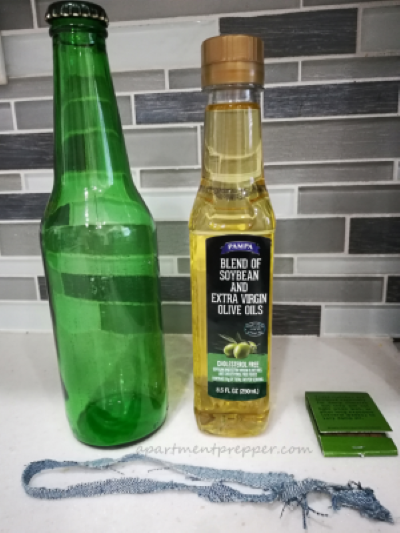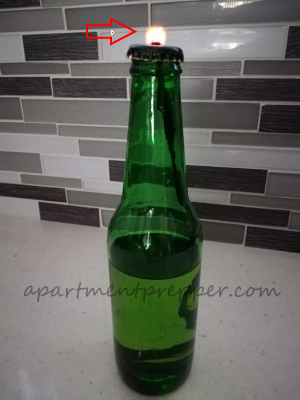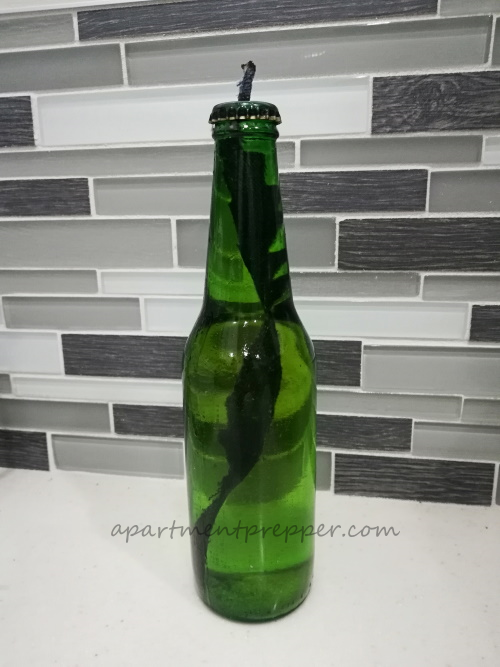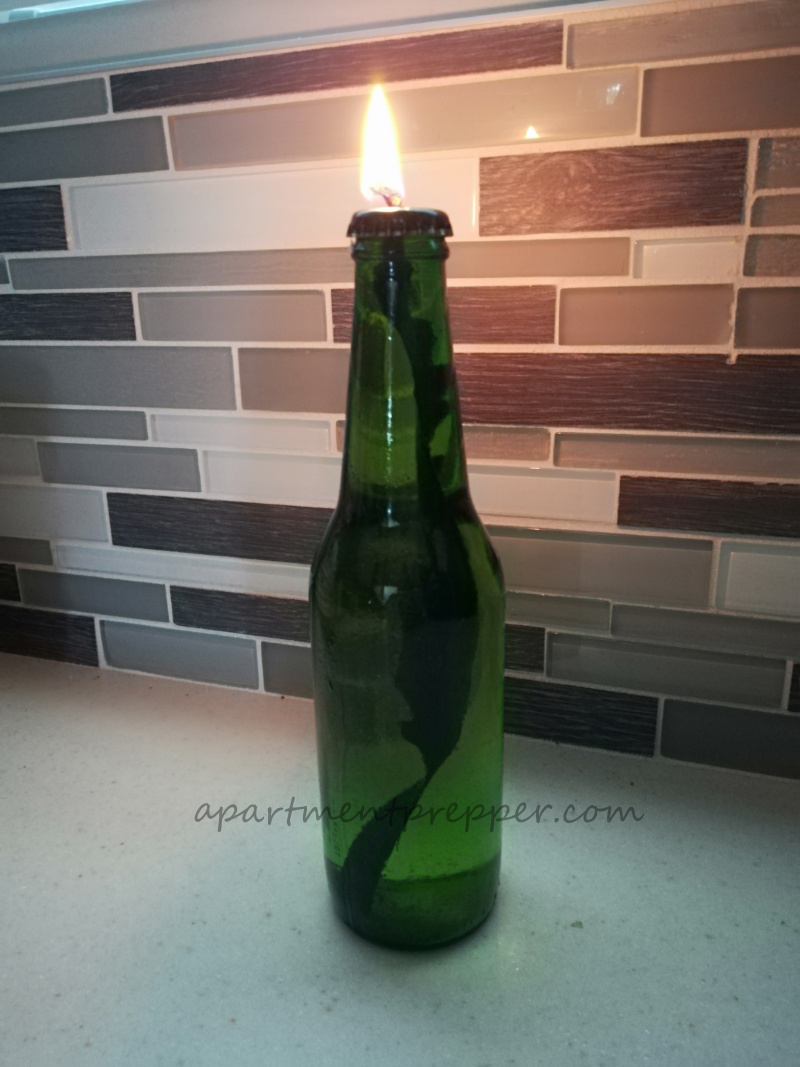This post is by Bernie Carr, apartmentprepper.com
This week we are trying a fun DIY project from the book, Olive Oil Lamps &c. by Ron Brown. The book includes a lot of ideas on making your own lamps from household items.

Materials
Olive Oil Lamps gives several options for containers, wicks and fuels – you are only limited by what you happen to have on hand. For today’s project I used the following materials:

Container – I used an empty beer bottle that is clean and dry.
Wick – a strip of denim repurposed from an old pair of pants. Use 100% cotton material for your wick. Polyester or blends will not work well as the wick will melt.
Fuel – I am using an olive and soybean oil blend I bought from the 99 Cents Only Store.
You’ll need a way to light the lamp such as matches or a lighter.
Steps
1. First, I poked a hole through the bottle cap for the wick. If there is no electricity, you can make the hole using a screw driver and hammer.
2. I cut a piece of denim from a pair of old jeans to use as the wick.
3. Then, I poured the oil into the beer bottle.
4. Lastly, I placed the wick into the oil and threaded it through the bottle cap.
5. Before lighting, I placed a dab of petroleum jelly on to the wick to make it easier to light.
Initial results
On my first attempt, I was able to light the wick but it only lasted for a minute or so. The flame sputtered out as the wick burned until finally it got extinguished.


Improving the results
I emailed Ron Brown, author of Olive Oil Lamps &c. to see where I could improve. He responded with a couple of suggestions:
- Make sure the wick is 100% cotton.
- Fill the bottle all the way to the brim, making sure there is no space between the oil and the bottle cap.
I already had a cotton wick, but I did not fill the bottle all the way to the top initially.
Fortunately, I had an extra bottle of the olive and soybean oil blend. I took his advice and added more oil. For this lamp, I ended using using 1 1/2 bottles.

With the bottle filled with oil all the way to the brim, I lighted the wick. This time, it burned properly and did not sputter out at all. The lamp stayed lit until I blew out the fire.
Now the lamp is ready to use!

About the book
I received a review copy of Olive Oil Lamps &c. from Ron Brown – thanks Ron! The book is concise but offers lots of information in a small package. By the time you finish reading it, you will be knowledgeable about various ways to make homemade emergency lights. Please note if you make your own lamp using other materials, bear in mind your results may be different due to the variability of fuels and wicks.
The final word
A power outage can happen at any time and anywhere. In case you experience a power outage away from all your supplies, it is good to know different ways to create your own emergency light from common materials. I highly recommend Olive Oil Lamps &c.




Thanks for sharing this Bernie. Looks like your timing is impeccable. There’re folks in California right now that need this info. “Olive Oil Lamps &c.” describes 15 different vegetable-oil lamp designs. And if you count the variations, it’s more like 22 or 23. What I like best is that, if you’re caught away from home when the lights go out, you’ll be able to drum up SOMETHING to light your way. But I do urge readers to TRY some of the designs in this book and not just browse the ideas. It’s like sex LOL. Talking about it and doing it are two different things. Of the eight books in the Non-Electric Lighting Series, I wrote this one in 2014 and it’s turned out to be the most popular of the bunch.
Hi Ron, I enjoyed making this project and can think of many others from the book I would try out. I do hope it helps someone find some lighting in an emergency. Thanks Ron!